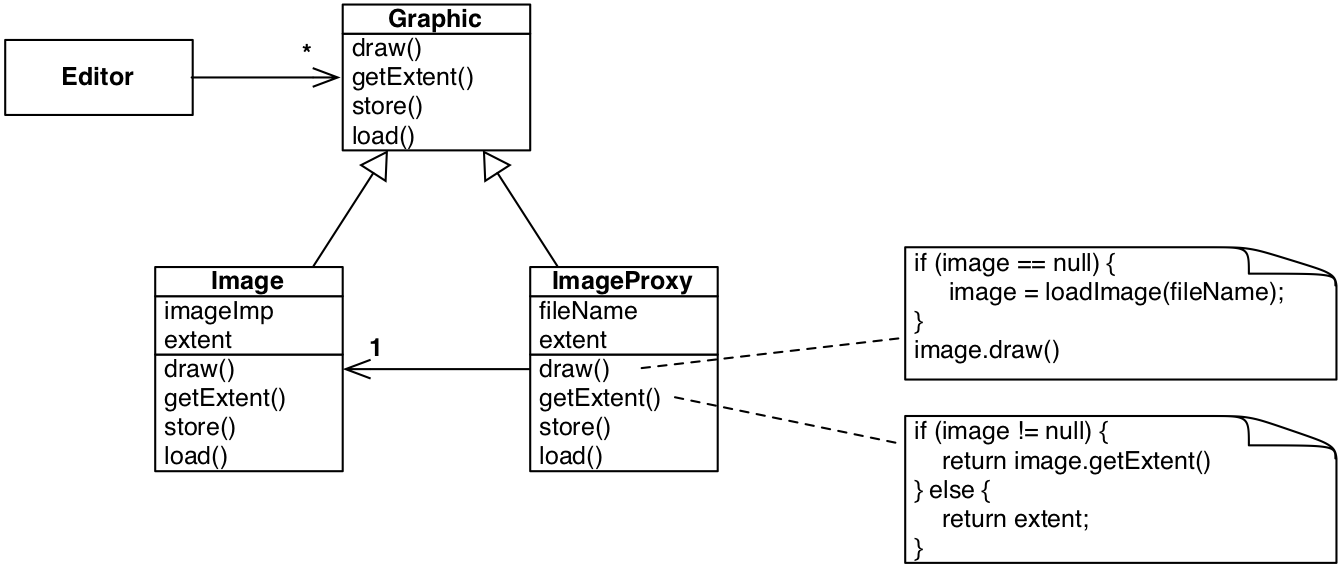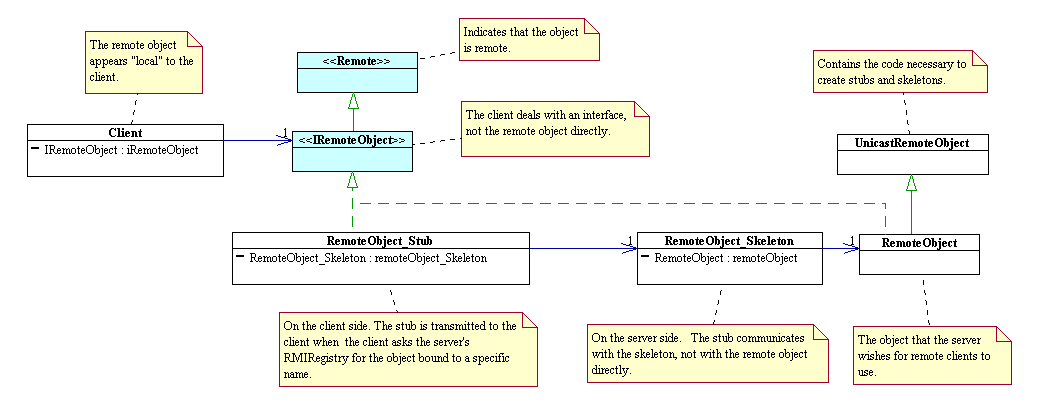Proxy
Gamma et al. 95
Intent
Provide a surrogate or placeholder for another object to control access to it.
Motivation
One reason to control the access to an object is to defer the cost of its creation and initialization
For instance, in a text editor, images in document are not needed when it is opened and the first page is opened.
Motivation - Example (1/2)

Motivation - Example (2/2)

Solution
Use a lightweight proxy object, that implements the same interface as the object you want to control.
Use this proxy object as a substitute for the controlled object. Let it create (and destroy) the other only when needed.
Structure

Applicability
Local representation for a distant object (remote proxy).
Create expensive objects on demand (virtual proxy).
Control the access to an object (protection proxy).
Smart pointers (smart pointers).
Consequences
A remote proxy can hide the fact that an object resides in a different address space.
A virtual proxy can perform optimizations such as creating an object on demand.
Both protection proxies and smart references allow additional housekeeping tasks when an object is accessed.
Implementation Tradeoffs
Operator (→) overload in C++.
Use of the “doesNotUnderstand” method in Smalltalk.
Author and Date
Design Patterns: Elements of Reusable Object-Oriented Software. Erich Gamma, Richard Helm,Ralph Johnson, and John Vlissides. Addison Wesley. October 1994.
More Examples
Java RMI
